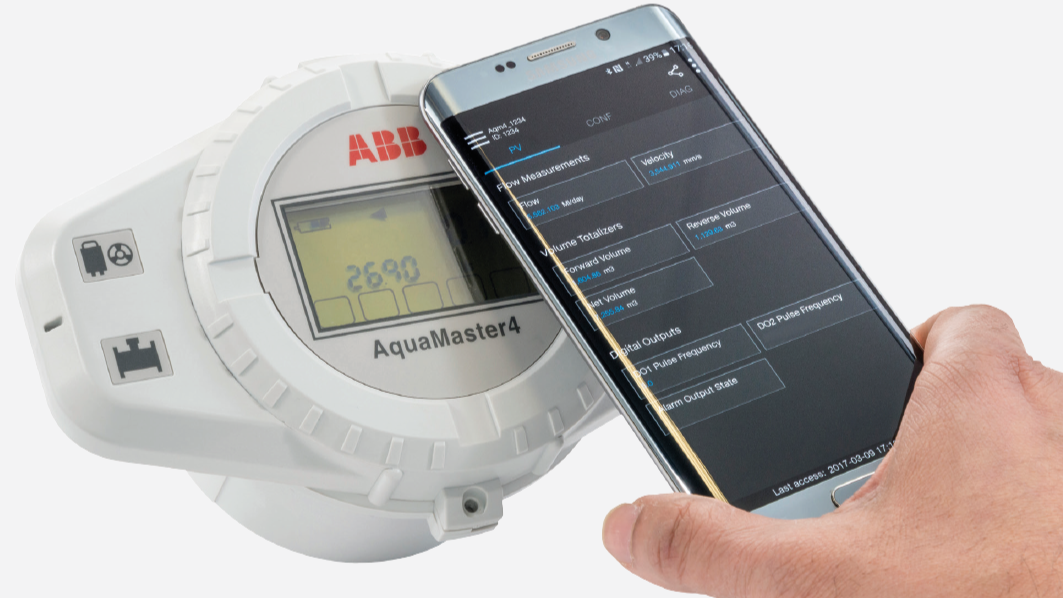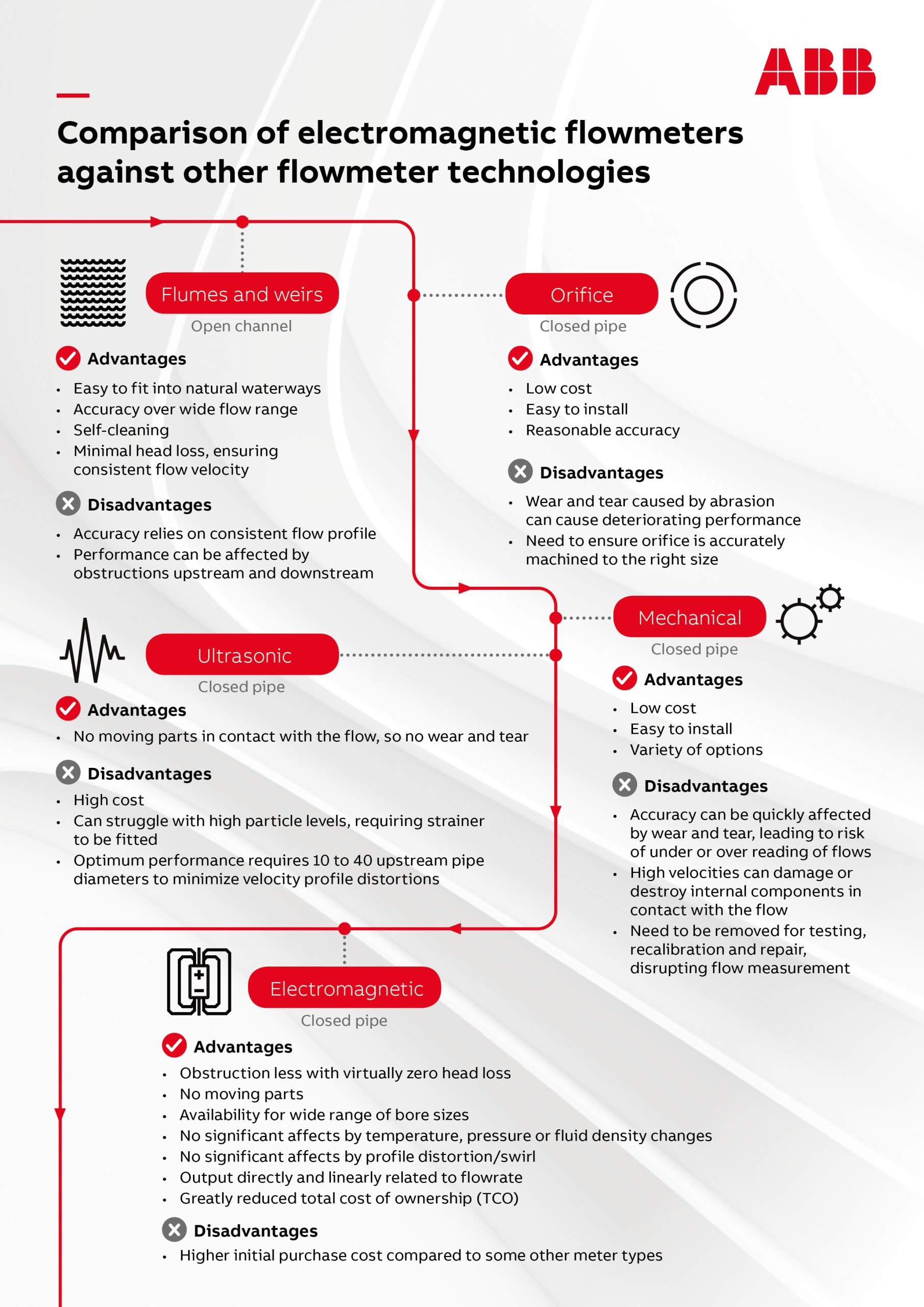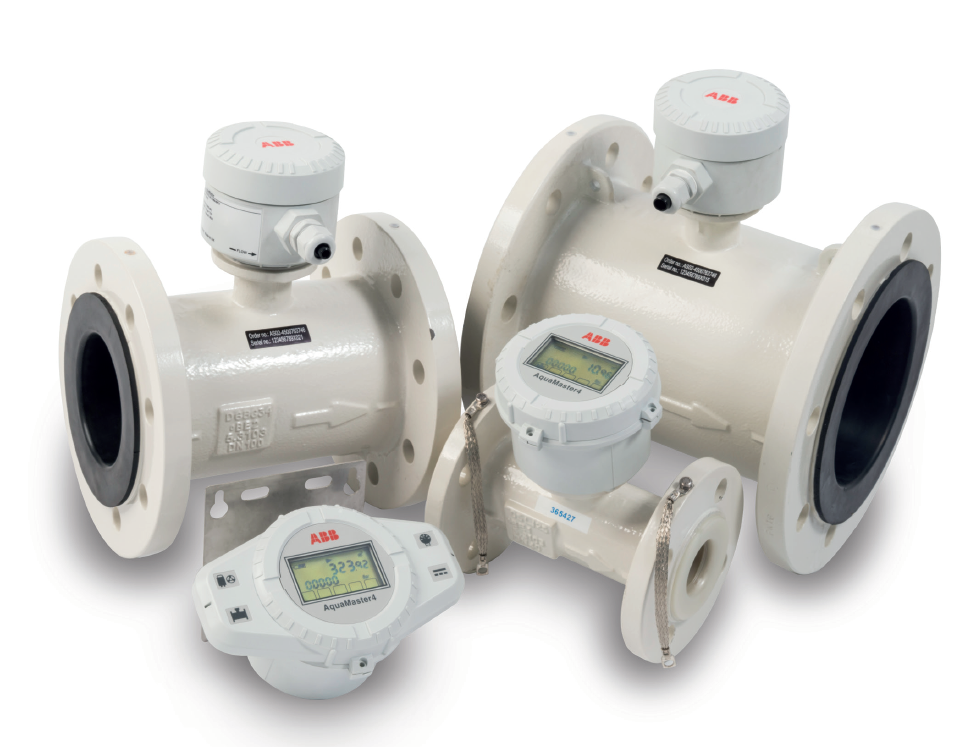With the growing recognition that sustainability in the water industry can only be achieved through a robust understanding of the demands being placed on supplies.
Krishna Prashanth, Global Product Line Manager- Electromagnetic Flow Meters at ABB Measurement & Analytics, looks at how advances in high accuracy flowmeters are helping in the fight to get water to the right users while minimizing losses.
Water lost from distribution networks is a serious, perennial problem for water companies around the globe. It is particularly critical as the world’s water supply is being put under increasing strain from factors such as rising urbanization, industrialization and the increasing need for irrigation for agriculture. Faced with these issues, governments are expecting water utilities to ensure that every possible drop of water is delivered to where it is needed.
Achieving this is a huge underthinking – it is not easy to account for every litre of water in pipelines that may stretch for thousands of kilometres across country that may be remote, difficult to operate in or hard to access. Although some countries have made progress in tackling and fixing water losses in their networks, others still have a lot of work to do and are still experiencing water losses that can run into high double figures.
A report by the International Water Association in 2019 highlighted the scale of the problem, estimating that pipelines around the globe lose around 346 billion litres of treated water every day. These losses have to be replaced, requiring more energy and resources that add to the environmental burdens already caused by an energy hungry industry. The resulting costs also reduce revenue that could be invested in upgrading networks. With these pressures and expectations, the water industry needs to both find the location of leaks and explain why they are happening.
Improvement starts with measurement
Detecting lost water starts with choosing a flow measurement method. A variety of flow measurement techniques can be used depending on the application. These can range from constrictive methods such as flumes and weirs for open channel systems, to orifice, mechanical, ultrasonic or electromagnetic flowmeters in closed pipe systems. Each of these methods have their own benefits and drawbacks.
The second major factor is the location of the measurements. Many water companies simply don’t measure in enough places to be able to get a full picture of their network, resulting in gaps in their understanding. Performing measurements as widely as possible gives utilities the maximum amount of data on the location and severity of water losses, data which can be used to develop methods and strategies to resolve them. It follows that any device used to measure flows must be as easy as possible to install, access and maintain, as water pipelines pass through both towns and cities as well as through remote areas that may not be as easy to access.
One of the most capable methods is electromagnetic flowmeters, which offer several advantages including consistent accuracy and high reliability. They are also very stable and can be used in a range of installations.
A major attraction of electromagnetic flowmeters is that they offer greatly enhanced accuracy with uncertainty as low as +/- 0.4% or better compared to other methods, as well as exhibiting a high level of repeatability throughout their operational life. Accuracies of this level are important when measuring for lost water to discriminate between legitimate consumption and leaks or other sources of loss.
Reliability is another important benefit of electromagnetic flowmeters. They have no moving parts, and so do not suffer from the wear and tear that affects mechanical designs. In turn, this reduces the maintenance burden and saves costs by avoiding the need for upstream strainers to filter sediment.
Electromagnetic flowmeters also have the potential to handle distorted velocity profiles without affecting accuracy, eliminating the need for defined lengths of pipeline upstream or downstream of the point of measurement as required by other technologies. As such, electromagnetic flowmeters can be fitted in locations with limited space, such as sites in towns and cities.
The benefits of digital
Several technological developments are making electromagnetic flowmeters even more attractive and cost effective.
One of these developments is the ability to use alternatives to conventional mains power, allowing flowmeters to be fitted anywhere. ABB launched the world’s first battery-powered device in the early 1990s, and its latest generation of AquaMaster electromagnetic flowmeters can be used in remote locations without the need for a mains supply. With the small size of electromagnetic flowmeters, these options open the possibility of achieving enhanced flow measurement in many more locations. As they have a significantly lower power consumption than conventional mains-powered devices, they can also offer reductions in energy cost that can help further reduce the cost of ownership of electromagnetic flowmeters.
Getting measurement data from the devices is another important aspect and manufacturers, including ABB, are looking at using Low Power Wide Area Network (LPWAN) band and Narrow Band Internet of Things (NB-IoT) technologies. These allow rapid exchange of measurement, configuration and maintenance data while using greatly reduced levels of power. As these technologies mature, they offer the prospect of controlling and monitoring water supplies in near real-time.
Further benefits are possible using Power over Ethernet (PoE), which uses the same cable for both power and communications. This improves flexibility by allowing for flowmeters to be installed wherever needed, making it ideal for industrial water measurement and control applications. Another development is ABB’s 4-wire Ethernet, which combines classic outputs with future communication protocols, ensuring devices are future-proof and increasing their longevity.
Flowmeters with Ethernet connectivity increase simplicity, flexibility and reliability, while offering access to previously hidden data, such as measurement of density, conductivity or concentration of the medium.
The time needed to commission, operate and maintain electromagnetic flowmeters and the skills and training of technicians and operators is another factor in their total cost of ownership. ABB’s AquaMaster4 electromagnetic flowmeter offers Near Field Communications (NFC) technology, allowing users to download configuration settings and retrieve logger data by tapping the transmitter with a smart device such as a phone or tablet loaded with ABB’s Velox app. This allows a variety of operational, logging and diagnostic data to be downloaded, interrogated and shared.
Pressure completes the puzzle
Pressure is a major cause of pipe bursts and water leaks, so effective pressure management is critical to getting the best performance from a water distribution network. While reducing pressure to reduce leakage can be a solution, it is not suitable for all areas, such as those with lower pressure, as it could cause them to suffer from weak or interrupted water supplies. Getting more data on pressure is key to making the right choice on pressure levels in the network.
Utilities are increasingly attracted by the prospect of combining flow and pressure measurement into one device. This offers numerous benefits, one of which is simplifying the gathering, sharing and analysis of data. By integrating the two readings into one device, users can download logged data and investigate flow and pressure activity for a specific period. Combining these possibilities with the ability to download and share this data through a smart device greatly improves the ability to assess and enhance network performance.
Water sustainability transformed
Optimizing water network management is based on achieving the highest levels of flow and pressure measurement accuracy. This allows true consumption to be understood, ensuring the utility can account for every drop of water supplied.
Highly accurate flowmeters help ensure that major investments in water supply infrastructures are wisely spent and that water, one of the world’s most precious resources, is well managed for the benefit of all.





